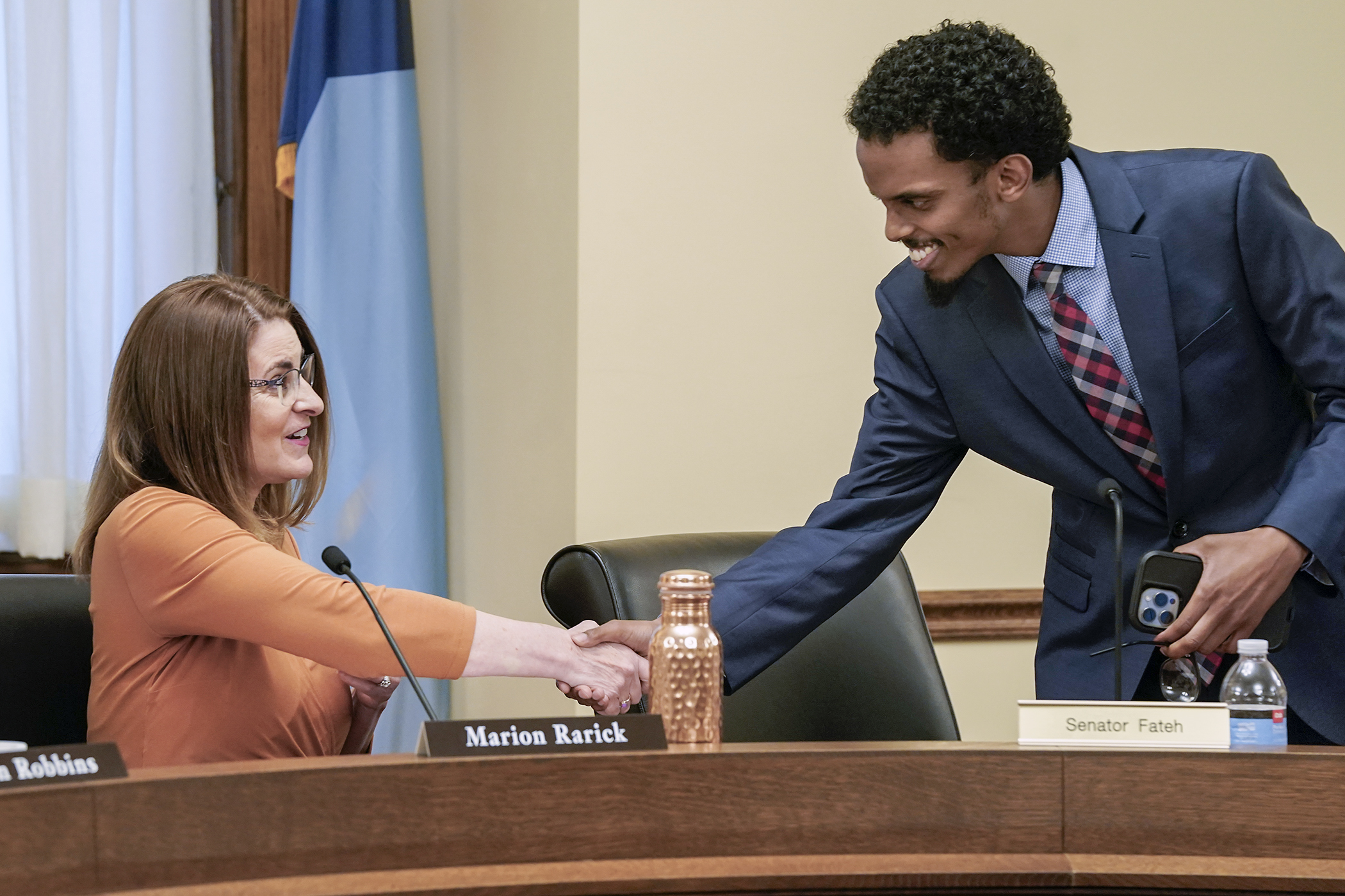State grants at center of House, Senate disagreement on higher education budget bills

Beginning to piece together a budget and policy was the task Thursday as the higher education conference committee met for the first time.
Conferees received walkthroughs on the House and Senate fiscal and policy language in their versions of HF2431, as well as a long list of “same and similar” items in the policy portion of the bill. They also heard public testimony from more than 20 testifiers and received numerous written testimonies.
No action was taken on any items. Conferees plan to meet again Friday.
The House version appropriates $3.97 billion for higher education while the Senate version appropriates $4.1 billion. Rep. Dan Wolgamott (DFL-St. Cloud) and Sen. Omar Fateh (DFL-Mpls) are the respective sponsors.
[MORE: View side-by-side comparisons: bill language, spreadsheets]
What’s the difference?
During the 2026-27 biennium, the House and Senate would both allocate $1.76 billion to Minnesota State system, nearly identical amounts to the University of Minnesota ($1.5 billion vs. $1.48 billion; and zero to the Mayo Foundation.
The two chambers most differ in their funding of the Office of Higher Education, which is responsible for the state’s financial aid programs. The Senate calls for $827.7 million in biennial spending, $92 million more than the House.
That difference stems primarily from how to fund the state grant program, which is facing a $239 million deficit.
The House puts an additional $33.45 million toward the state grant program while the Senate put an additional $104.52 million into the program.
Among other significant differences, the Senate would allocate:
- $8 million more in Fostering Independence Higher Education Grants;
- $4 million more in Student-Parent Support Initiative;
- $4 million more in State Work-Study;
- $2 million more for Paramedic Scholarship Program;
- $1.1 million more for Emergency Assistance Postsecondary Students
The House exceeds the Senate in these outlays:
- $15.26 million in onetime fiscal year 2026 funding for an ALS research partnership with the Mayo Clinic
- $1.3 million more for Hennepin Healthcare for? graduate family medical education programs?; and
- $1 million more for Grants to Underrepresented Student? Teachers.
Policy details
The two bodies agree or are very close in several areas, including:
- permitting Minnesota State to offer applied doctoral degrees in cybersecurity;
- amending the eligibility requirements for institutions to receive state student financial aid;
- lowering the maximum lifetime credit cap on state grant awards from 180 credits to 120 credits;
- ensuring that only resident rates are paid under the North Star Promise program;
- making ineligible for the North Star Promise scholarship a student who has completed the degree requirements for their first baccalaureate degree;
- expanding the Tribal College Supplemental Assistance program to provide financial assistance to Tribal colleges based on beneficiary students as well as nonbeneficiary student; and
- amending a definition to specify that certificates, diplomas or degrees earned under the Dual Training grant program must come from accredited postsecondary institutions.
Senate-only proposals would:
- require public and charter high schools to participate in the direct admissions program by the 2029-30 school year;
- require Minnesota State and request the University of Minnesota system to maintain two doses of opiate antagonists in each campus residential building;
- establish a working group to develop policy recommendations to prevent fraudulent enrollment in online courses;
- adopt a section from the Office of Higher Education’s agency bill removing a requirement for the office to gather Minnesota institutions’ dual-credit acceptance policies; and
- adjust the deadline state grant applications for an academic term from the end of the fiscal year.
House-only proposals would:
- impose a tuition cap to state grants for four-year programs;
- increase the required cost-of-training cost match for large employers from 25% to 50% of the cost of training;
- double the maximum grant amounts available under the dual training grant program; and
- exclude “for-profit organizations” from eligibility for the grants in the Spinal Cord and Traumatic Brain Injury Research Grant Program.
Related Articles
Search Session Daily
Advanced Search OptionsPriority Dailies
Speaker Emerita Melissa Hortman, husband killed in attack
By HPIS Staff House Speaker Emerita Melissa Hortman (DFL-Brooklyn Park) and her husband, Mark, were fatally shot in their home early Saturday morning.
Gov. Tim Walz announced the news dur...
House Speaker Emerita Melissa Hortman (DFL-Brooklyn Park) and her husband, Mark, were fatally shot in their home early Saturday morning.
Gov. Tim Walz announced the news dur...
Lawmakers deliver budget bills to governor's desk in one-day special session
By Mike Cook About that talk of needing all 21 hours left in a legislative day to complete a special session?
House members were more than up to the challenge Monday. Beginning at 10 a.m...
About that talk of needing all 21 hours left in a legislative day to complete a special session?
House members were more than up to the challenge Monday. Beginning at 10 a.m...